Module 6#
Architectural Patterns#
Properties of patterns#
- Addresses a recurring design problem that arises in specific design situations and presents a solution to it
- Document existing well proven design experience
- Identify and specify abstractions at the high level
- Helps to build complex systems
- Manage software complexity
A set of guidelines that help to get a good design are:
1. Avoid rigidity (Hard to change)
2. Avoid Fragility (Whenever the design changes, it should not break)
3. Avoid Immobility (Cannot be reused)
OO Design Principles#
-
Open Close:
- Open to extension and close for modification
- Template and strategy pattern
-
Dependency Inversion:
- Decouple two module dependencies
- Adapter pattern
-
Liskov's Substitution: Superclass can be replaced by subclass
-
Interface Segregation: Interfaces are made only for a particular purpose
-
Single responsibilies: One class for only one task
Three part schema for a pattern#
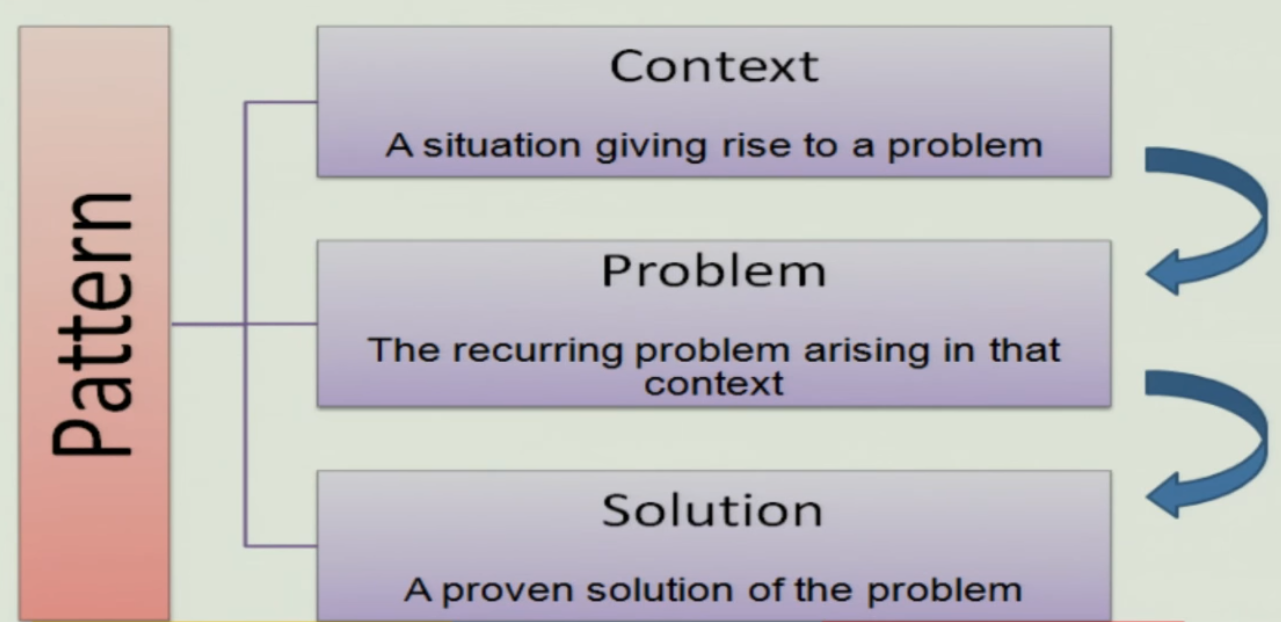
Context#
- A scenario or situation where design problem arises
- Ideally the scenario should be generic but it might not always be possible
- Example
- Developing messaging solution for mobile applications
- Developing software for a man machine interface
Problem#
- Start with a problem statement that captures the theme
- Completed by forces
- A requirement
- A constraint
- A desirable property
- The forces can complement or contradict. This can be used to choose what force needs to be taken into consideration and what should not be
Solution#
- It is a configuration to balance the forces mentioned earlier
- Like structure with components and relationships
- Run time behavior
- Structure: Addresses static part of the solution
- Run time: Behavior while running

Problem Categories#
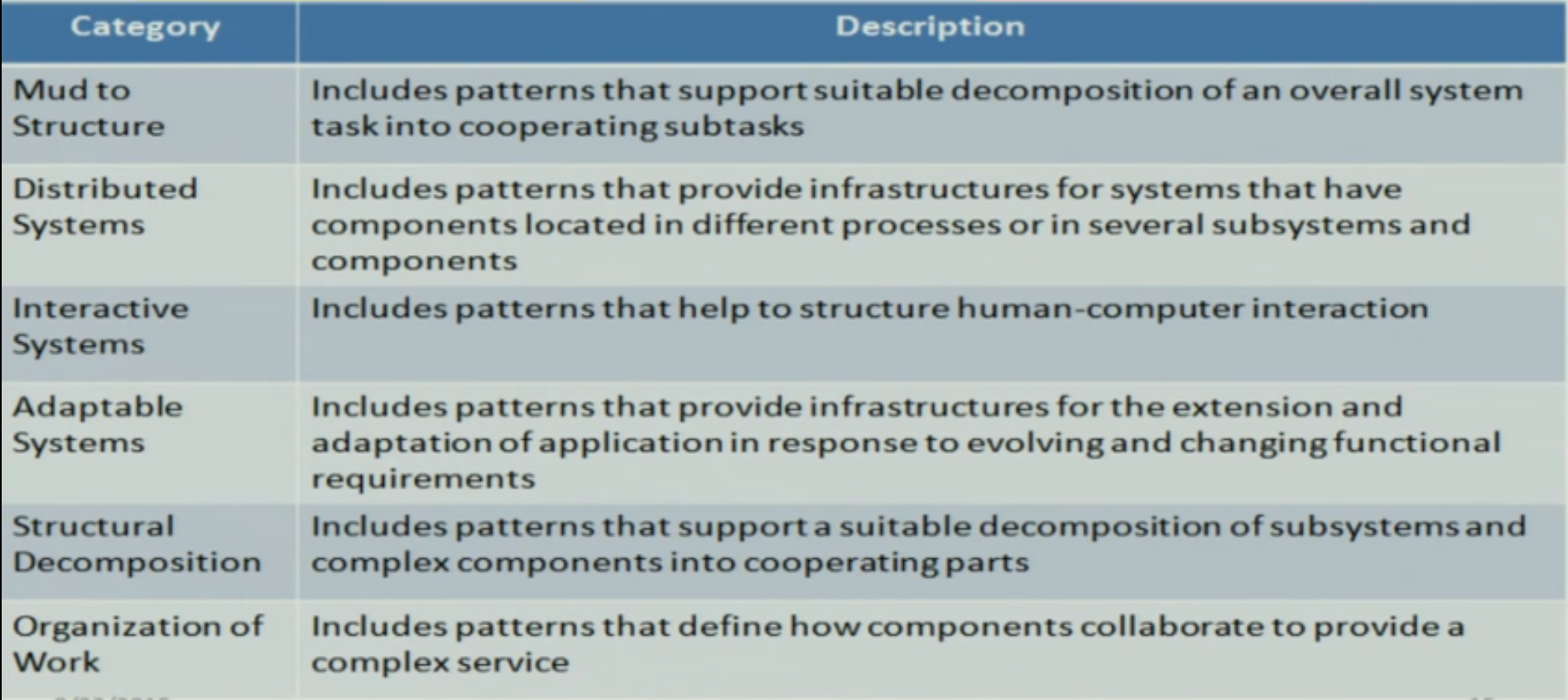
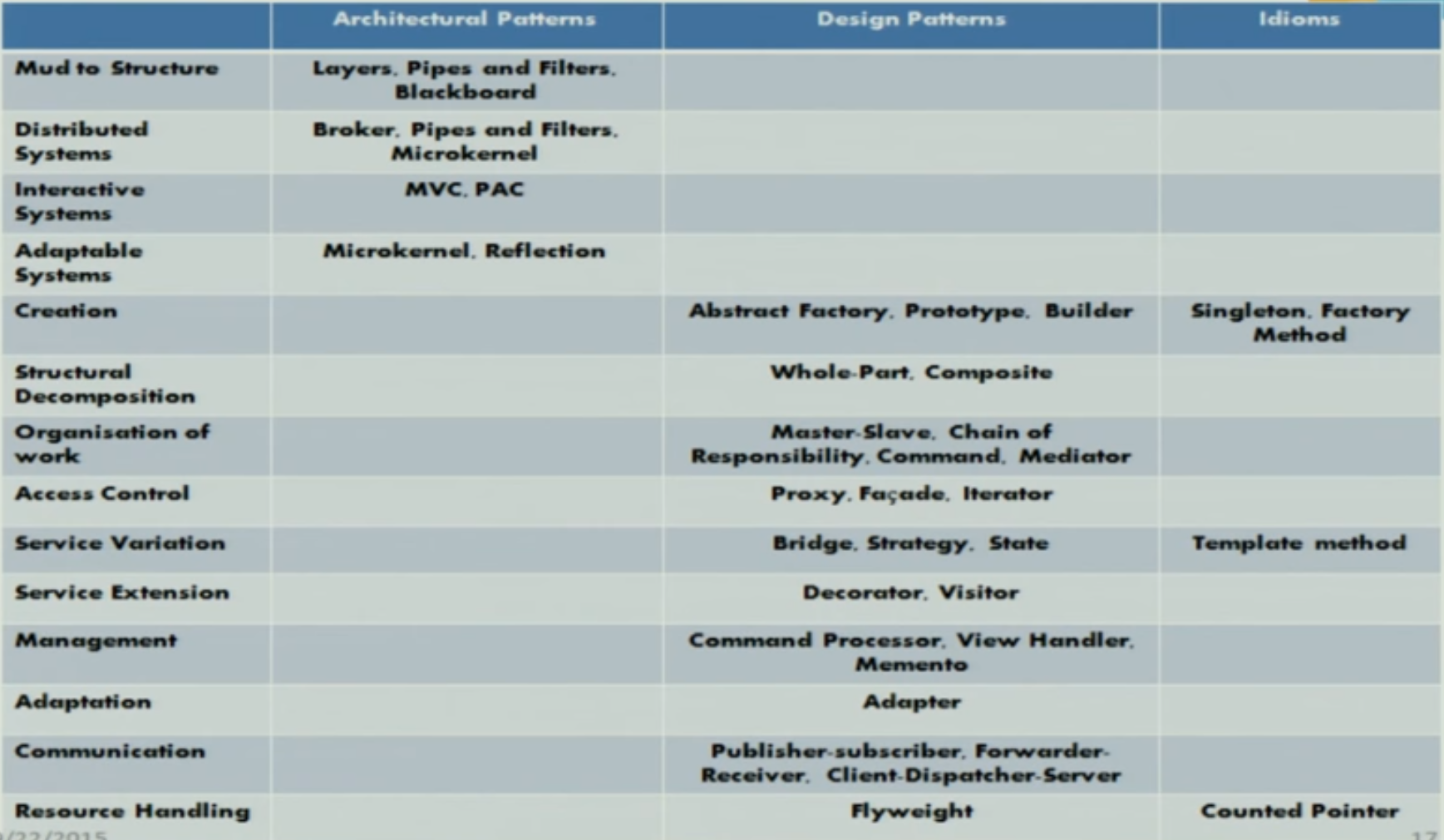

Layering Pattern#
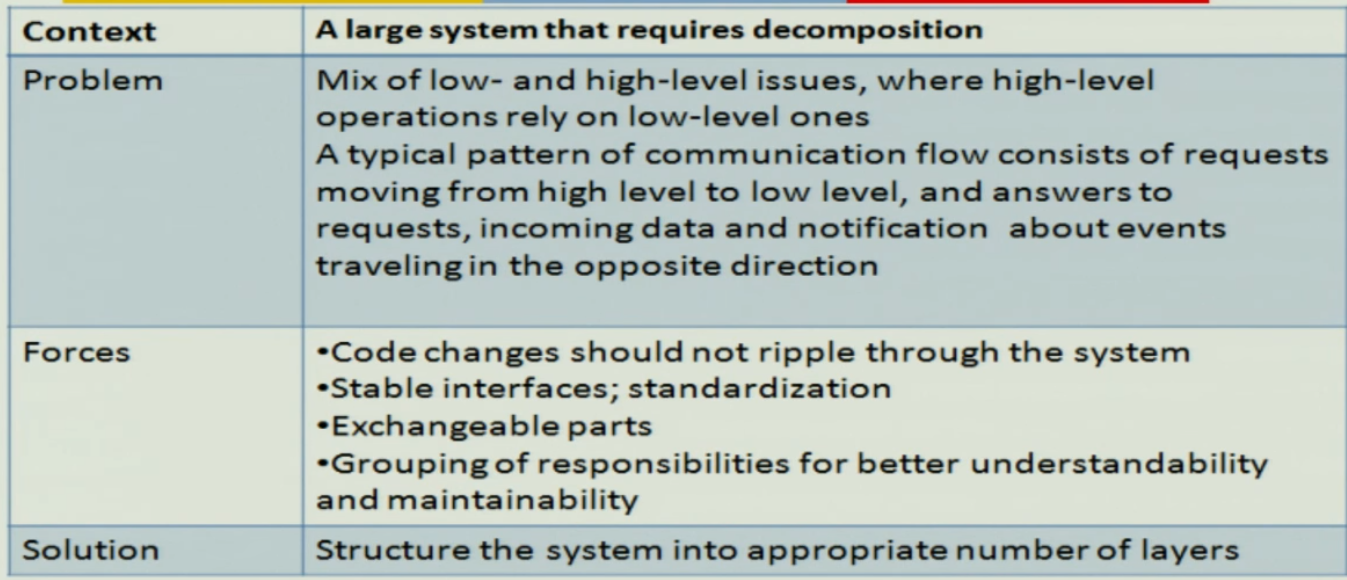
Example#
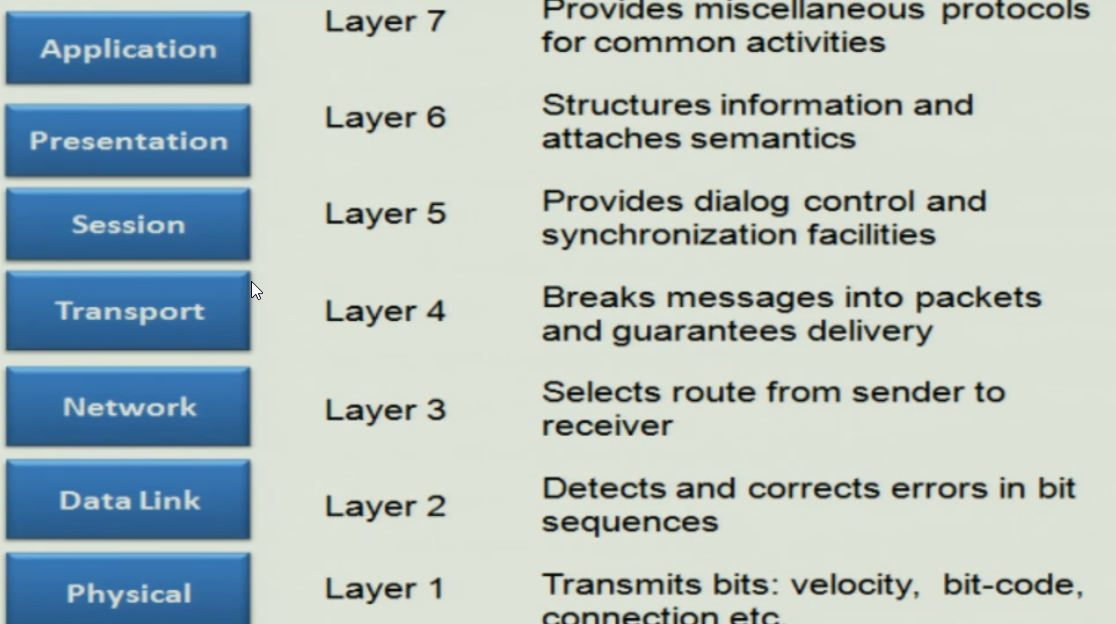
Layers#
- Services of Layer J are only used by Layer J + 1
- No further direct dependencies between layers
- Each layer can have many components
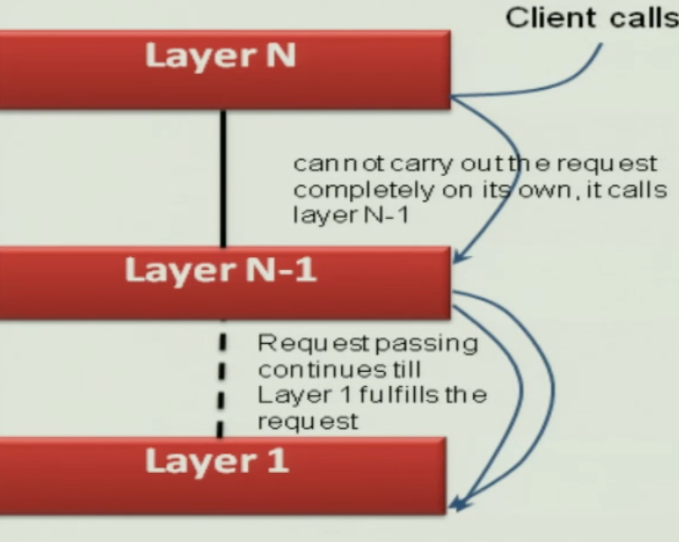
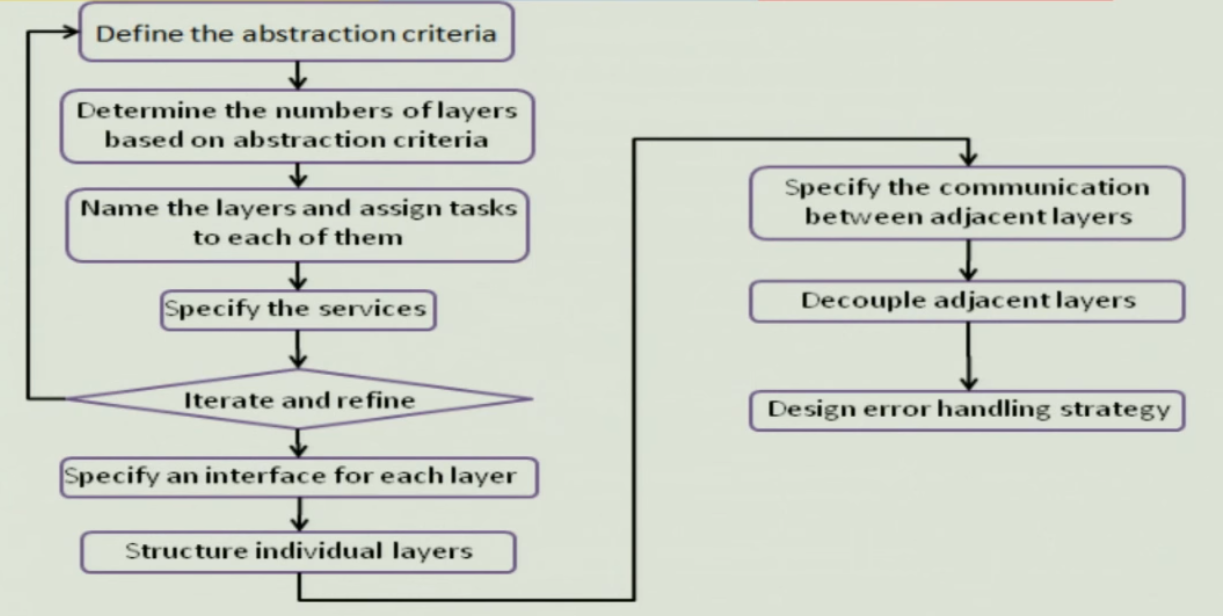
The following is used to define the layer abstraction criteria
- Most generic components are in the lowest layer and domain specific components are in the top layer
- More stable components are in lower layers.
- Distance from hardware is also used in determining the layers
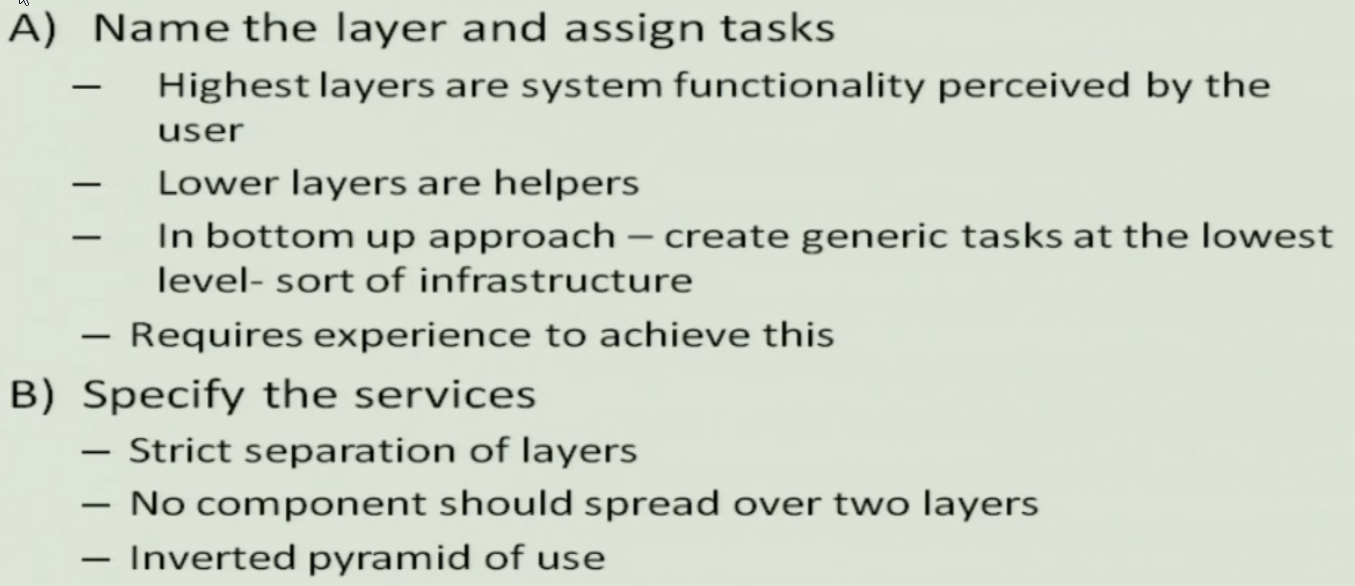
Construction of layer#
- Use black box approach to specify layer interface
- Structure each layer
- Identify components in each layer
- Bridge or strategy pattern can help

Examples#

Summary#
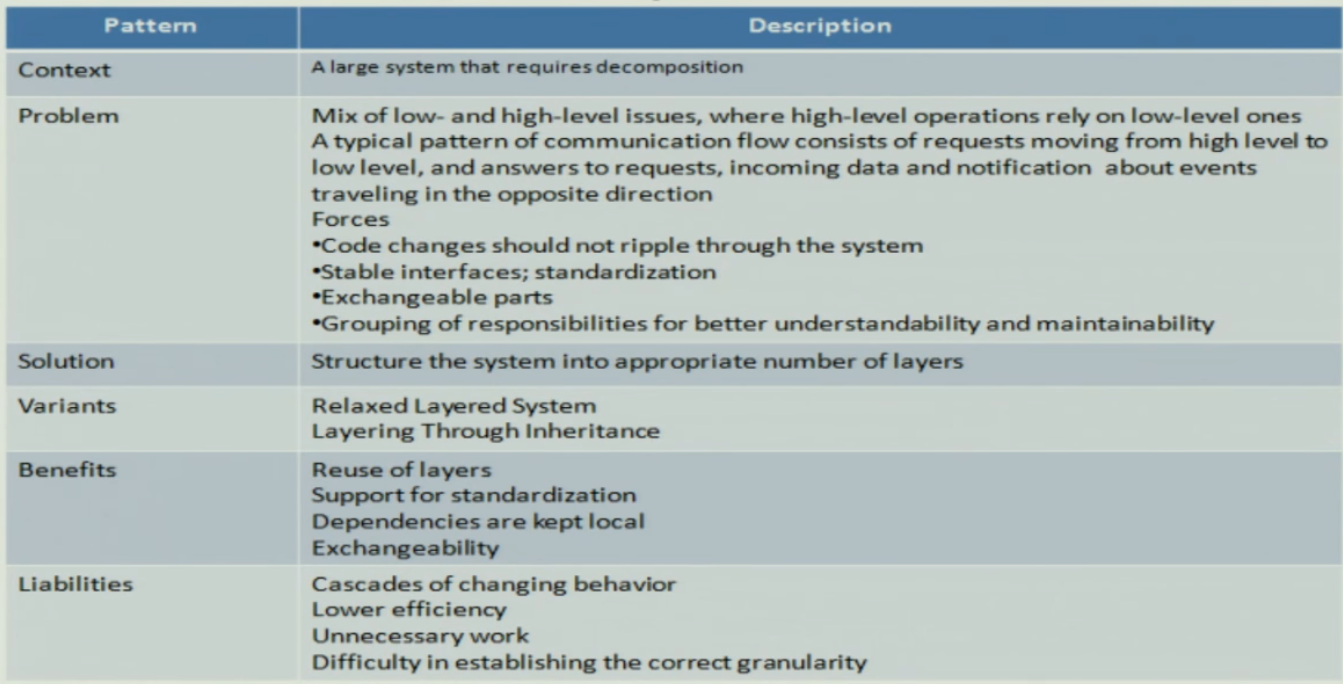
Pipe and Filter Pattern#
Filter#
- Has interfaces from which a set of inputs flow in and set of outputs flow out
- Processing step is in a filter component
- Independent entities
- Does not share state with other filters
Pipes#
- Data is passed through pipes between adjacent filters
- Stateless data stream
- Source end feeds filter input and sink receives output
3 Part schema#

A simple case#

- Passive Filters
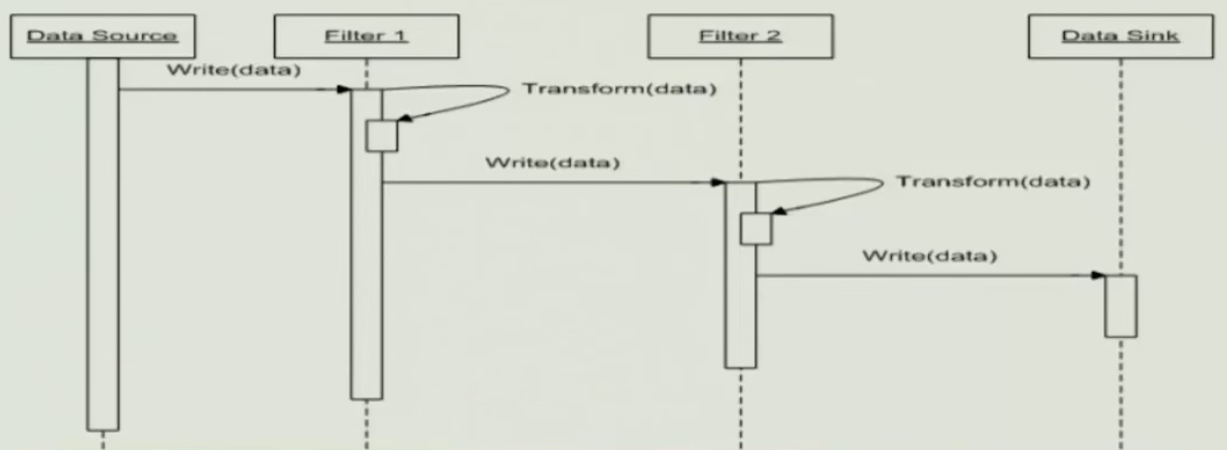
- Active Filters

- Buffered Pipe for synchronizing
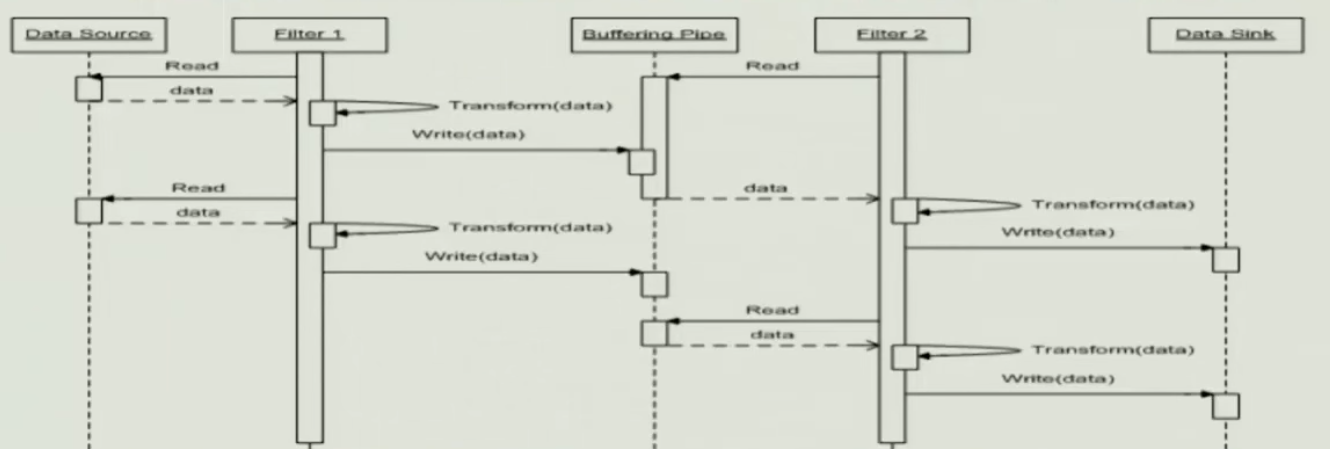
Components of Pipe and Filter#
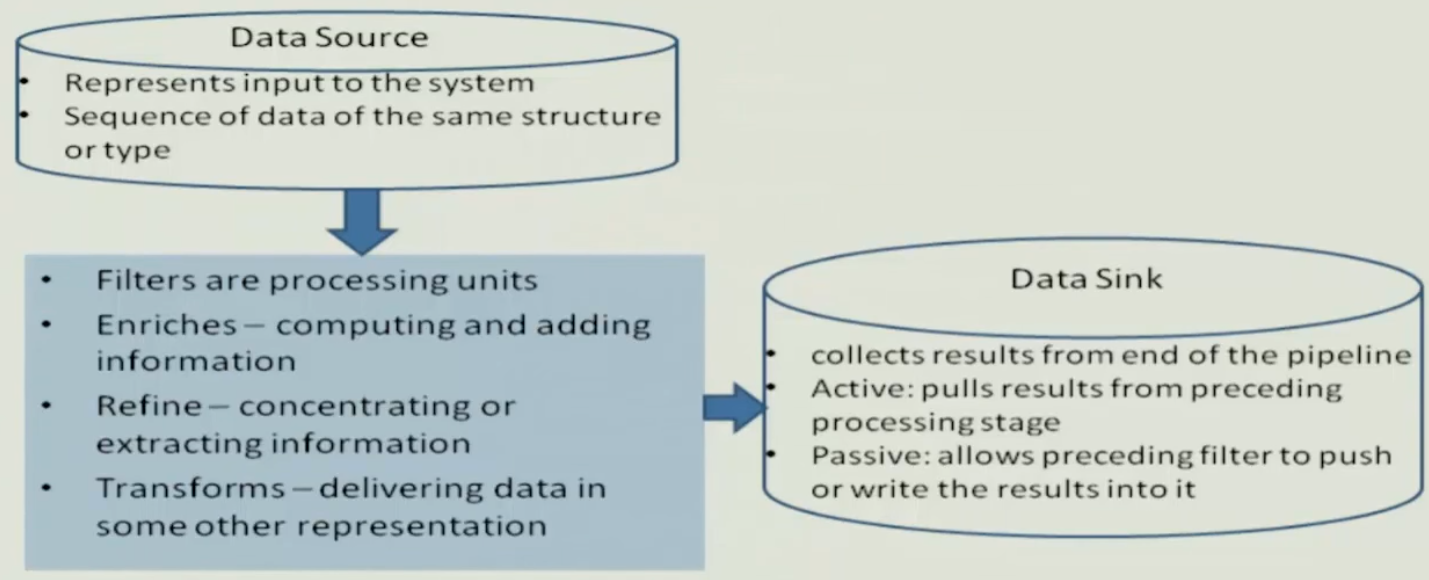
Implementation Steps#


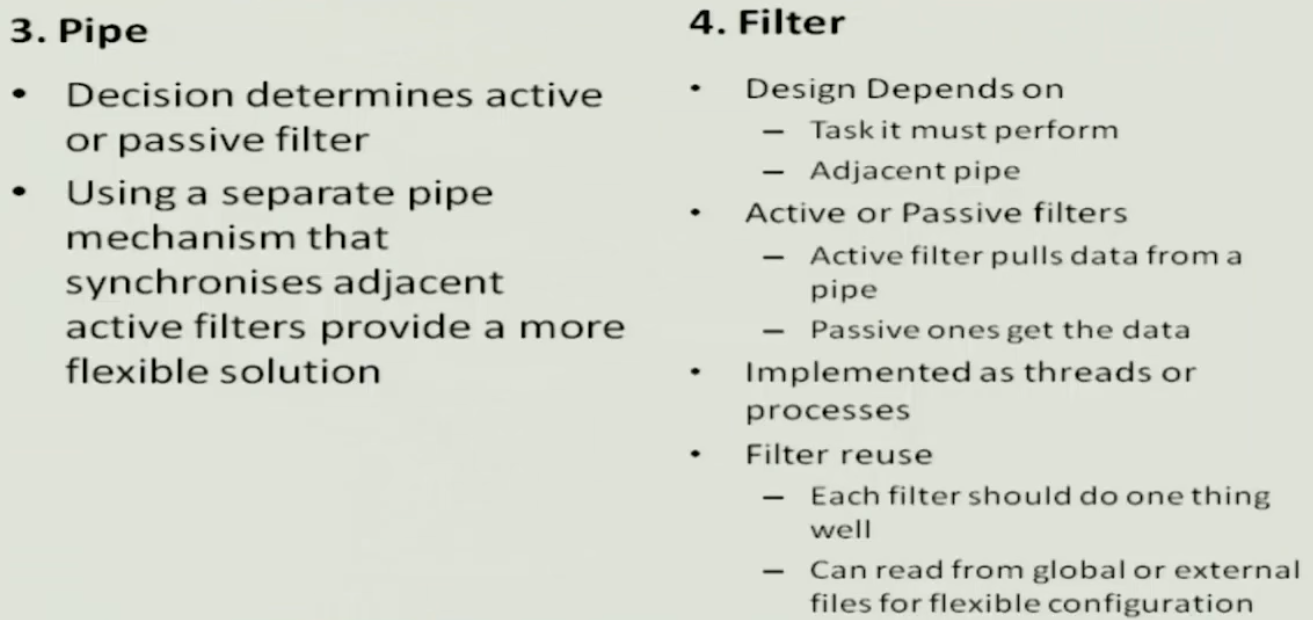
Pros and Cons#
- No intermediate files necessary
- Filter addition replacement and reuse
- Rapid prototyping
- Concurrent execution
-
Certain analysis possible like deadlock Throughput and latency checks
-
Data transformation overhead
- Error handling is a challenge
- Sharing state is expensive
- Lowest common denominator on data transmission determines the overall throughput
Examples#
- Most PaaS providers have message oriented service orchestration
- Azure has queing services
- Amazon SQS is used to communicate between EC2 instances
Blackboard Pattern#
| Title | Details |
|---|---|
| Context | A set of heterogeneous specialized modules which dynamically change their strategies as a response to unpredictable events |
| Problem | When there is no deterministic solutions to process |
| Solutions to partial problems require representation | |
| No predetermined strat is present to solve a problem | |
| Dealing with uncertain knowledge | |
| Forces | A complete search of solution is not possible |
| Different algos used for partial solutions | |
| One algorithm uses results of another algo | |
| No strict sequence between algos |
Examples#
- Speech recognition
- Vehicle Identification
- Robot Control
- Modern Machine Learning algos for complex task
- OCR based text recognition
Components#
- Central data structures
- Control plan encapsulates information necessary to run the system
- Domain KS are concerned with the solving of domain specific problems
- Control KS adapt the current control plan to the current situation

Pros and cons#
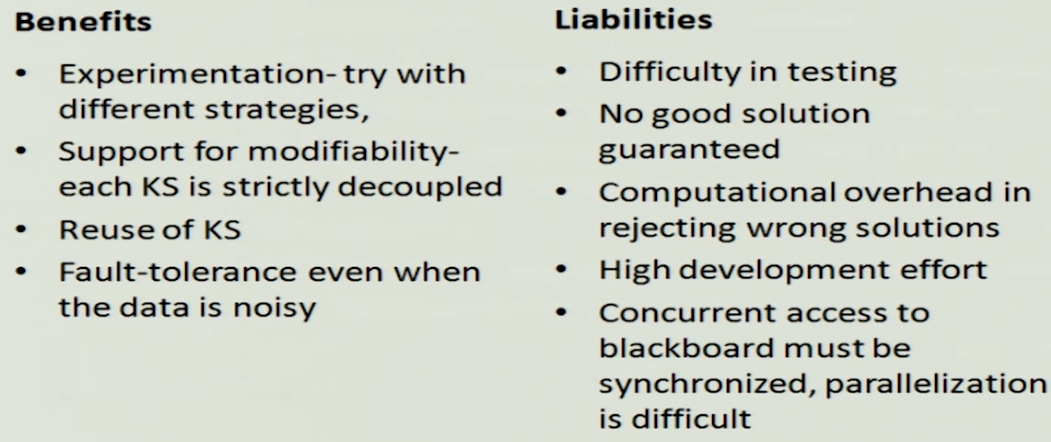
Distributed System Patterns#
| Title | Description |
|---|---|
| Context | Complex environment of systems to take advantage of computing power via clusters |
| A software may be available only on a specific computer | |
| Due security we might have to run different parts in different systems | |
| Some services are provided by business partners over internet | |
| Problem | To build a sw system as a set of decoupled interoperating components rather than a monolith |
| Require a flexible means of interprocess communication | |
| Forces | It should be possible to distribute components during deployment |
| Need to exchange add or remove components at run time | |
| Architecture should hide system specific and implementation specific details from users of components and services |
Broker Pattern#
A broker component helps in achieving better decoupling of clients and servers
- Servers: Register themselves with the broker and make their services available
- Clients: access the functionality of servers by sending requests via the broker
The broker:
- Locating the appropriate server and forwarding a request to that server
- Transmitting results and exceptions back to the client
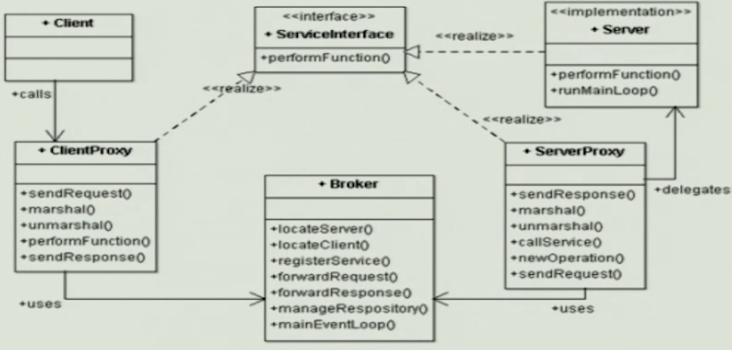
Implementation#
- Define an object model or use an existing one
- Decide which kind of component interoperability the system should offer
- Specify the APIs the broker component provides for collaborating
- Use proxy objects to hide implementation details from clients and servers
- Design the broker component in parallel with steps 3 and
- Develop IDL compilers
CORBA#
- CORBA is the oldest amongst the middleware technologies used in today's IT world
- CORBA stands for Common Object Request Broker Architecture
- CORBA supports Dynamic Invocation Interface (DII)
Remote Method Invocation#
- Sun's Java RMI is based on the transparent Broker variant pattern
- Client side proxy and server side invoker have to be created manually by am additional compilation step
- The service interface is written in Java
- RMI is limited to usage in Java
- To establish interoperability RMI IIOP is provided
Benefits#
- Location independence
- Type system transparency (Marshaling and unmarshaling are done)
- Isolation
- Separation of concern
- Resource management
- Portability
Liability#
- Error handling
- Overhead since developers do not know about the location of objects
- Performance
- Lower fault tolerance (server / broker failures)
Model View Controller#
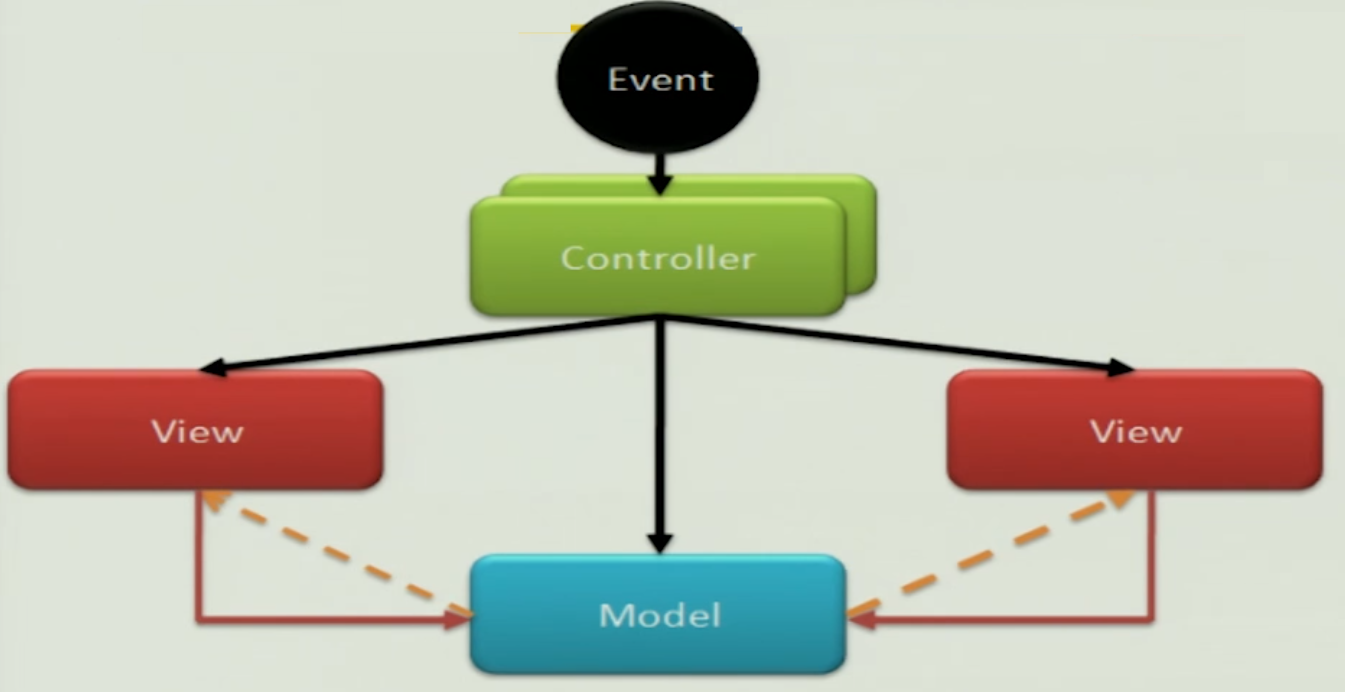

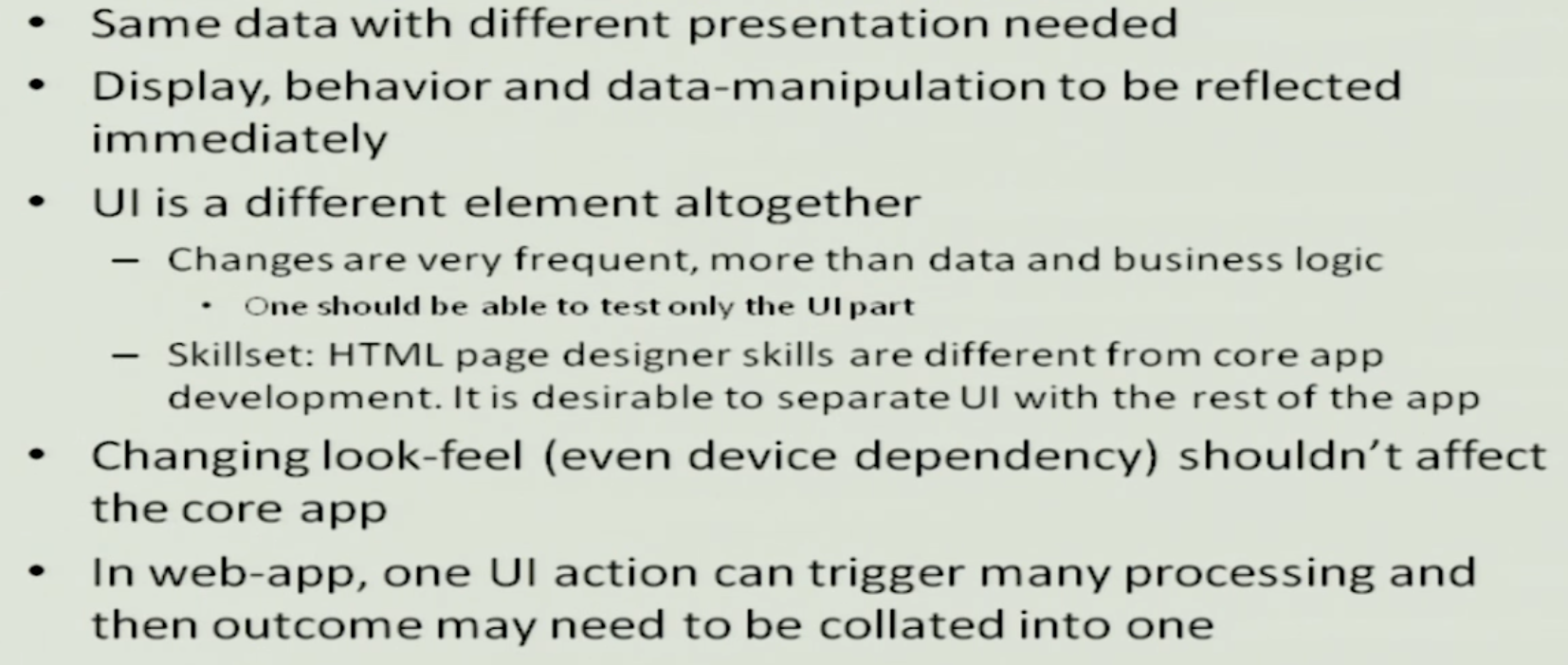
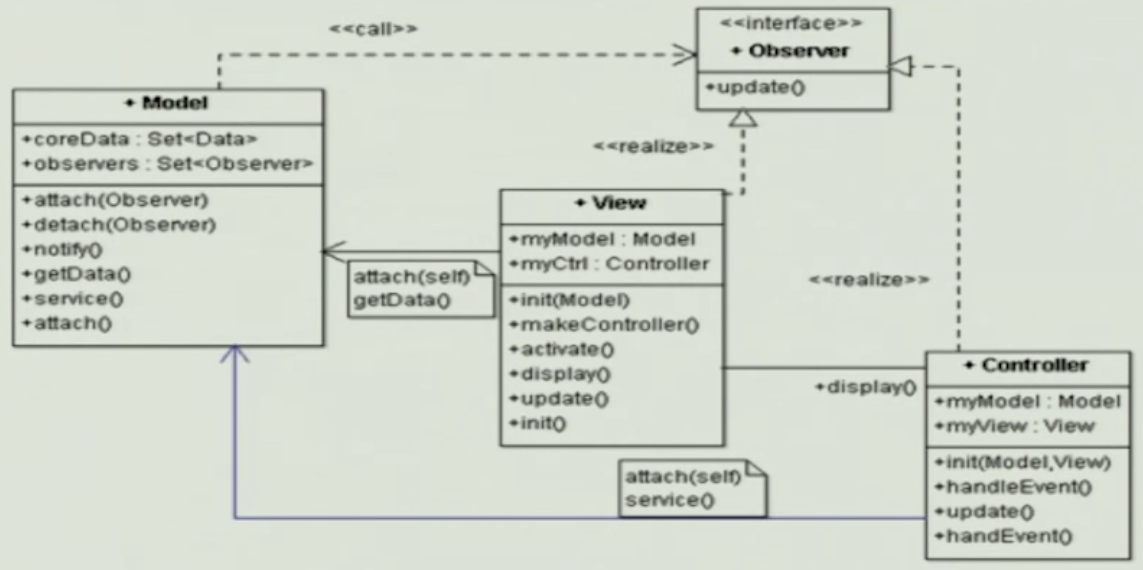

MVC Dynamics#

MVC Initialization#
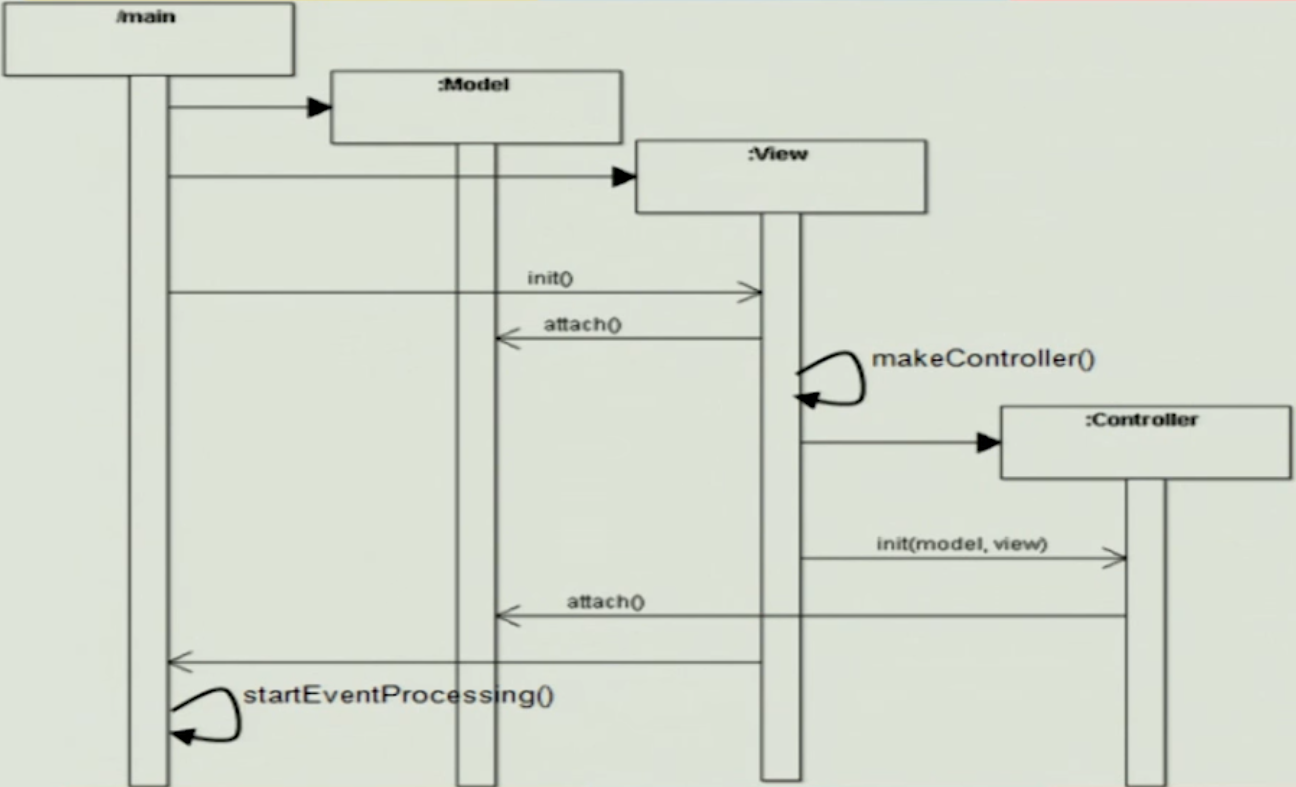
AJAX application as MVC#
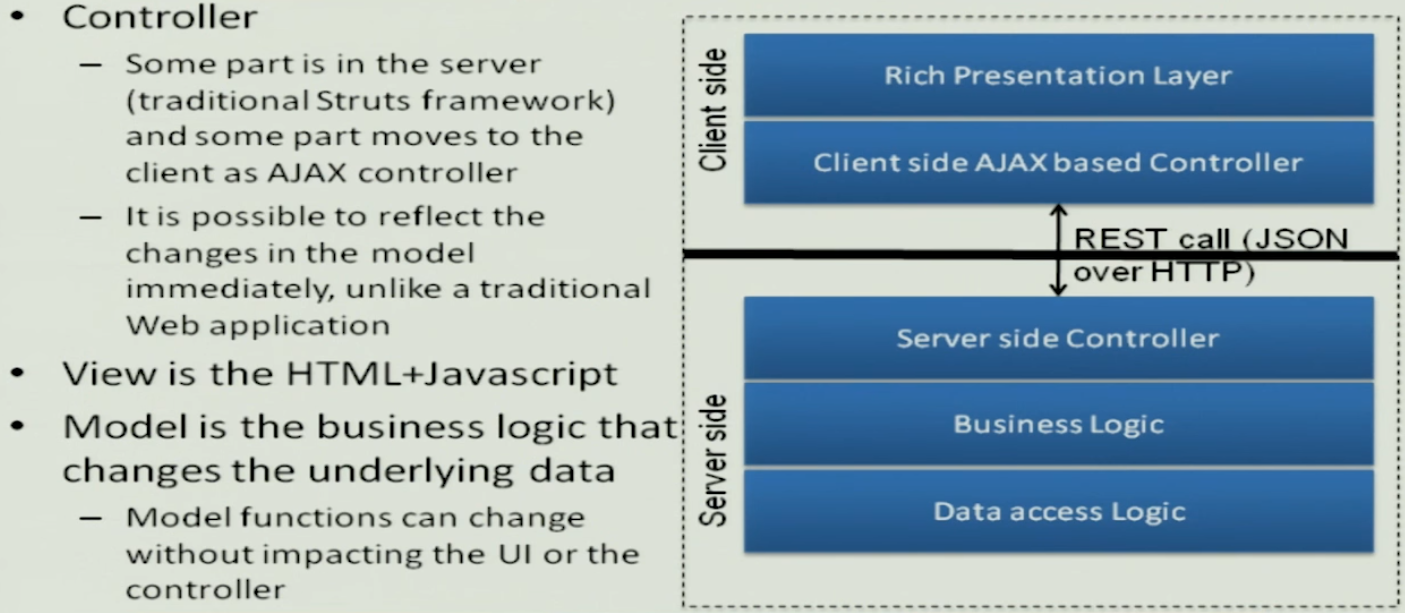
Benefits#
- Multiple views can be done for the same model
- Synchronized views
- Pluggable views and controllers
- Exchangeability of look and feel
- Framework potential
Liabilities#
- Increased complexity
- Potential execssive number of updates
- Inefficiency of data access in view
- Difficulty of using MVC with modern user interface tools
Micro Kernel#
Context#
The development of several applications that use similar programming interfaces that build on the same core functionality
Problem#
- Developing software for an application domain that needs to cope with a broad spectrum of similar standards and technologies
- Continuous evolution, platform must be extensible, portable and adaptable

